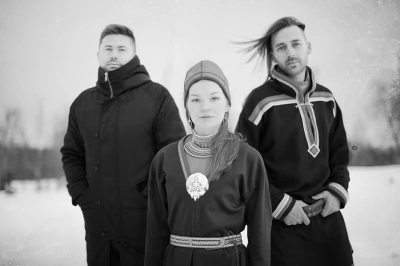
©
У Норвегії відбувається несподіване культурне явище: традиційна народна музика, яка довгий час асоціювалася з сільською місцевістю та фестивалями фольклору, повертається на сцену — цього разу в міських клубах і з новим, енергійним звучанням. Молодь активно відновлює й переосмислює корінні музичні традиції, створюючи нові простори для живої музики, танців і спільноти. Центром цього відродження стала подія Tuvas Blodklubb, що відбувається щомісяця в Riksscenen — національному центрі народної музики й танцю в Осло. Засновниця клубу, музикантка Тува Сювертсен (Tuva Syvertsen), називає його першим «справжнім нічним клубом народної музики» не лише в Норвегії, а й, можливо, у всьому світі. «Я хотіла створити простір, де можна напитися й танцювати під народну музику у суботу ввечері», — каже Сювертсен, яка є учасницею гурту Valkyrien Allstars і грає на традиційній хардінгфеле (hardingfele) — національному інструменті Норвегії. Поряд із інструментальною музикою відроджується і саамська вокальна традиція "йойк", яка довгий час перебувала під забороною у школах через асиміляційну політику держави. Сьогодні молоді артисти, зокрема співачка Мар’я Мортенссон, просувають цю форму пісенного самовираження на національну сцену. Вона наголошує, що знайомство з власною культурною спадщиною дає молодим людям силу й відчуття ідентичності в нестабільному світі. І справді, норвезька народна музика бере свій початок з віків. Вона звучить через хардінгфеле, лангелейк (струнний інструмент, подібний до цимбал) та буккергорн (духовий інструмент із козячого рогу). Тува Сювертсен мріє вивести Tuvas Blodklubb за межі країни — до Лондона, Берліна та інших культурних столиць Європи.
Norwegian Youth Bring Folk Music to the Club Scene
An unexpected cultural phenomenon is unfolding in Norway: traditional folk music, long associated with rural areas and folklore festivals, is making a comeback — this time in urban spaces with a fresh, energetic twist. Young people are actively reinterpreting and reviving musical traditions, creating vibrant, inclusive, and contemporary spaces for live music, dancing, and community. At the heart of this revival is Tuvas Blodklubb — a monthly event held at Riksscenen, Norway’s national center for traditional music and dance in Oslo. It was founded by musician Tuva Syvertsen, who describes it as the world's first true folk music nightclub. "I wanted to create a place where you could relax, have a drink, and dance to folk music on a Saturday night," says Syvertsen, a member of the band Valkyrien Allstars and a performer on the hardingfele, Norway’s traditional fiddle known for its rich resonance. Alongside the instrumental revival, vocal traditions are also flourishing — in particular, the Sámi joik, which was long banned in schools due to state assimilation policies. Today, young artists like singer Marja Mortensson are bringing this unique form of musical expression into the national spotlight. "Knowing your own musical heritage gives you strength, especially in an unstable world," Mortensson emphasizes. Norwegian folk music has centuries-old roots. In addition to the hardingfele, it features instruments like the langeleik (a stringed instrument similar to a dulcimer) and the bukkehorn (a wind instrument made from a goat's horn). Tuvas Blodklubb offers more than just live music — it's also about dancing, DJ sets, folk karaoke, and even remixes of old recordings with electronic beats. The event attracts a new generation eager for rhythm, culture, and shared experiences. Tuva hopes to expand the club’s reach beyond Norway — to cities like London and Berlin. "If it feels exotic to Norwegians, I imagine it would be even more intriguing abroad," she says.
1597